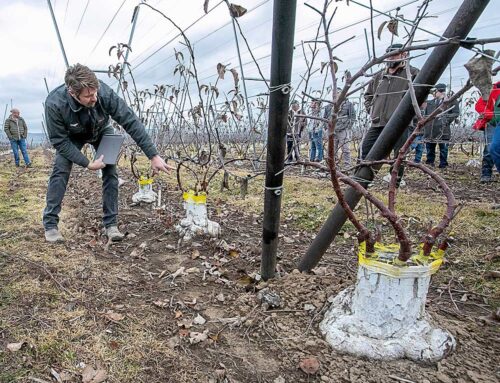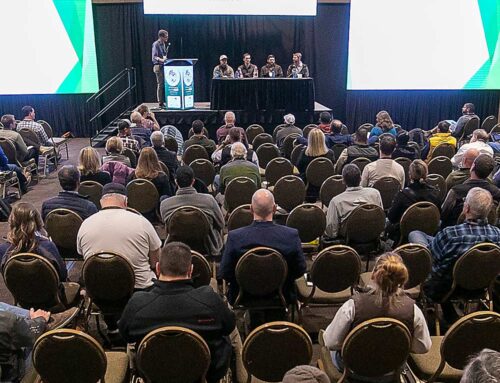
Flor Servin of the Washington Department of Labor and Industries demonstrates personal protective equipment use on Adolfo Meza at a pesticide decontamination training in 2015. New federal worker protection standards require annual training for workers and handlers. (TJ Mullinax/Good Fruit Grower)
Growers in the U.S. should be following a host of new, substantial upgrades and changes to the worker protection standards from the Environmental Protection Agency.
Most of the new changes took effect in January 2017, while a few are slated for January 2018. However, they were finalized and published in the federal register in the fall of 2015.
Thus, President Donald Trump’s executive order rolling back recently passed regulatory changes will not likely make a difference.
“So, I don’t think this will be affected,” said Mike Gempler, executive director of the Washington Growers League, a Yakima, Washington, labor nonprofit at its annual meeting.
Some of the highlighted changes are:
—Annual training for all workers and handlers. The previous provision required renewal every five years.
—Before they start work, train workers who need to enter any area treated with pesticides in the past 30 days or who has had a re-entry interval in effect within the past 30 days. No more five-day grace period for training.
—Keep training records for two years.
—Post treated areas with an outdoor re-entry interval greater than 48 hours. Previously, oral notification was an option.
—If a label calls for a respirator, provide workers with fit testing and training, and keep records of it. Previously, growers just had to provide a respirator. (Some states, including Washington, already had this requirement.)
—Handlers and early-entry workers must be age 18 or older. The rules had no age minimum before. (Some states, including Washington, already had this requirement.)
—During outdoor application, forbid entry into an application exclusion zone, an area up to 100 feet from equipment. Previously, the only rule was simply don’t spray people.
Starting in 2018, the applicator will have to suspend an application if anyone enters the zone, even if that zone includes property off the farm.
In 2018, worker and handler training topics will expand.
Training on the new content will be required within 180 days of when the material becomes available but no earlier than January 2018. •
ONLINE
For a complete list of worker protection standards, visit www.epa.gov/pesticide-worker-safety
– by Ross Courtney






Leave A Comment